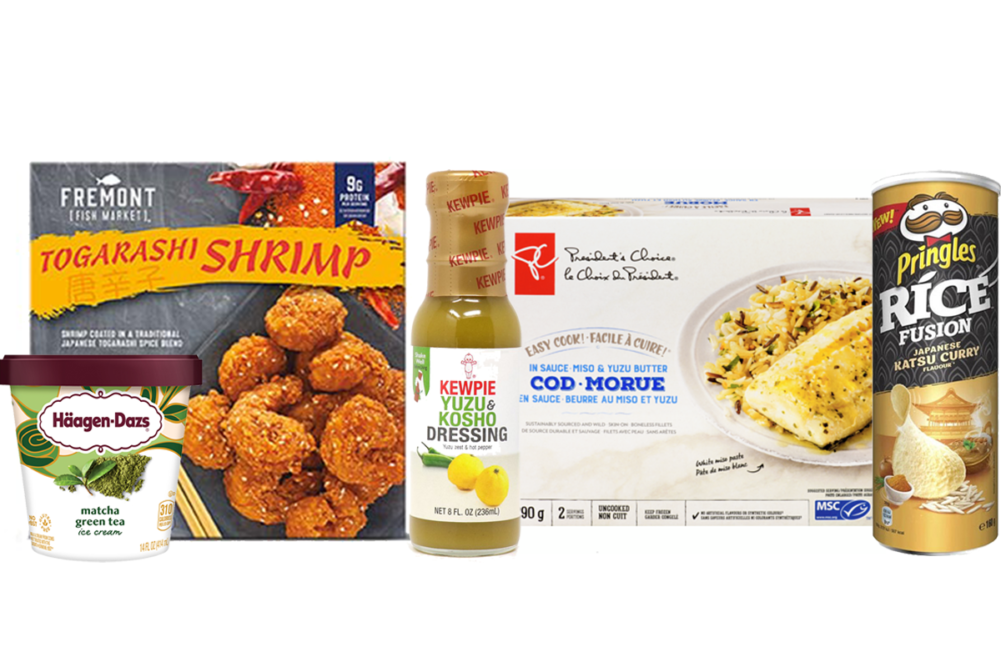CHICAGO — While consumers seeking comfort food during the lockdown days of the pandemic propelled ramen to a top-ordered food for delivery and curbside pickup, Americans’ yen for Japanese cuisine extends far beyond noodle soup or, for that matter sushi, according to research by Wixon, St. Francis, Wis. Think lemon yuzu cheesecake and katsu curry rice chips.
There’s a flavor fusion movement gaining momentum by culinary professionals who are taking tabletop seasonings from traditional Japanese cuisine and applying them to Western food favorites, said Ryan Kukuruzovic, corporate chef.
“Umami may be the most recently identified of our five basic tastes, but it has ancient roots in Asian cuisines, Japanese in particular,” Mr. Kukuruzovic said. “The savory, umami notes in traditional Japanese fermented foods like miso and shoyu are incredible as the basis for culinary flavor development.”
Rachael Jarzembowski, marketing manager, said, “Interest in Japanese cuisine and flavors has really taken hold among US consumers in the past few years. Sushi and ramen were the gateway for diners, especially younger ones, but now there’s a desire to explore beyond these dishes.”
Data from Mintel, Chicago, show that not only have 41% of US consumers eaten Japanese cuisine at home or away from home, but 45% are interested in eating it from a restaurant or retail store. This trend presents an opportunity for packaged goods companies to get creative.
“Sauces and flavors at all restaurants, not just Japanese restaurants, are Japanese,” Ms. Jarzembowski said. “This not only shows how Japanese flavors are trending, but demonstrates their versatility across segments of cuisine. There are so many flavors to explore.”
The company showcased the rich diversity of Japanese ingredients and preparation techniques during a hands-on sampling box webinar in November. Participants explored sweet and savory creations, such as umeboshi (salted, pickled plum) coconut popcorn sprinkled with black sesame seeds, smoky tonkatsu (fried, breadcrumb-coated pork dish) soup and snack rice crackers, and Japanese whiskey shoyu jerky.
Shoyu is a Japanese-style soy sauce with a sweeter, more nuanced flavor than Chinese soy sauce. It’s a 50-50 blend of soy and wheat, whereas Chinese soy sauce is all soy. Japanese whiskey is created by double distilling malted or pearled barley and ageing it in wood barrels.
Wixon has created flavor systems that mimic these traditional Japanese foods and beverages, allowing for varied applications. For example, a sweet and savory hand-rolled caramel is made with smoky shoyu flavor and umami flavor technology.
“It’s a very simple candy with a very complex flavor,” said Zak Otto, senior research and development manager. “Both ingredients provide mouthfeel, and neither contains any (MSG) monosodium glutamate.”
Mr. Kukuruzovic said, “We reimagined the essential ingredients of Japanese cuisine and made them into craveable flavor systems. We did a lot of experimenting with miso.”
Rich in proteins, vitamins and minerals, miso is a prominent ingredient in traditional and modern Japanese cuisine and is gaining global interest. It is made by fermenting soybeans with salt, koji (a fungus), and sometimes, rice, barley, buckwheat or seaweed.
“The fermentation process results in a thick paste, which is used liberally in Japanese cuisine for making sauces, spreads, soups, pickled vegetables, fish, meats and more,” Mr. Kukuruzovic said. “The flavor nuances and intensity amongst various miso pastes are tremendous. We focused on the relatively standard three varieties: white, yellow and red.”
White (shiro) miso is known as “sweet” or “mellow” miso. It is fermented for a short time and is lower in salt than darker varieties. It has a mild, delicate flavor.
“It is great in warm-weather soups, dressings and light sauces,” Mr. Kukuruzovic said. “It can be used in place of dairy in some recipes. Consider miso mashed potatoes.”
Yellow (shinshu) miso is another mild type. It’s fermented slightly longer than white miso, with the color ranging from light yellow to light brown. It is saltier and more acidic and works well as a multipurpose flavoring or condiment.
“Red (aka) miso is a longer-fermented miso,” Mr. Kukuruzovic said. “It is generally saltier than light yellow and white miso and has a pungent, more concentrated flavor making it best suited for heartier dishes, like rich soups, braises, and marinades or glazes.
“Miso is not limited to miso soup or some kind of ‘cheffy’ glaze. They are basic flavor enhancers when used at a minimal rate. Red miso can easily overwhelm milder ingredients, so use it sparingly.”
Miso is not limited to savory applications. The Wixon team found it works well in sweet and pastry applications, too.
“This discovery led us to create our salted miso glaze, a spin on the classic salted caramel pairing,” Mr. Kukuruzovic said.
Other Japanese flavor systems from Wixon include green tea in both matcha and hojicha varieties. The latter is made by roasting beans over high-heat charcoal. This process removes the bitterness of regular green tea, resulting in a unique caramel flavor. Japanese citrus flavor systems include yuzu and sudachi and can be used in place of lemon, lime and other citrus in all types of applications. Pickled ginger is also quite versatile.
“We have seen pickled as a preparation claim grow in popularity exponentially through the last several years,” Ms. Jarzembowski said. “Specifically, pickled ginger has opportunity to expand beyond being served with sushi.”
